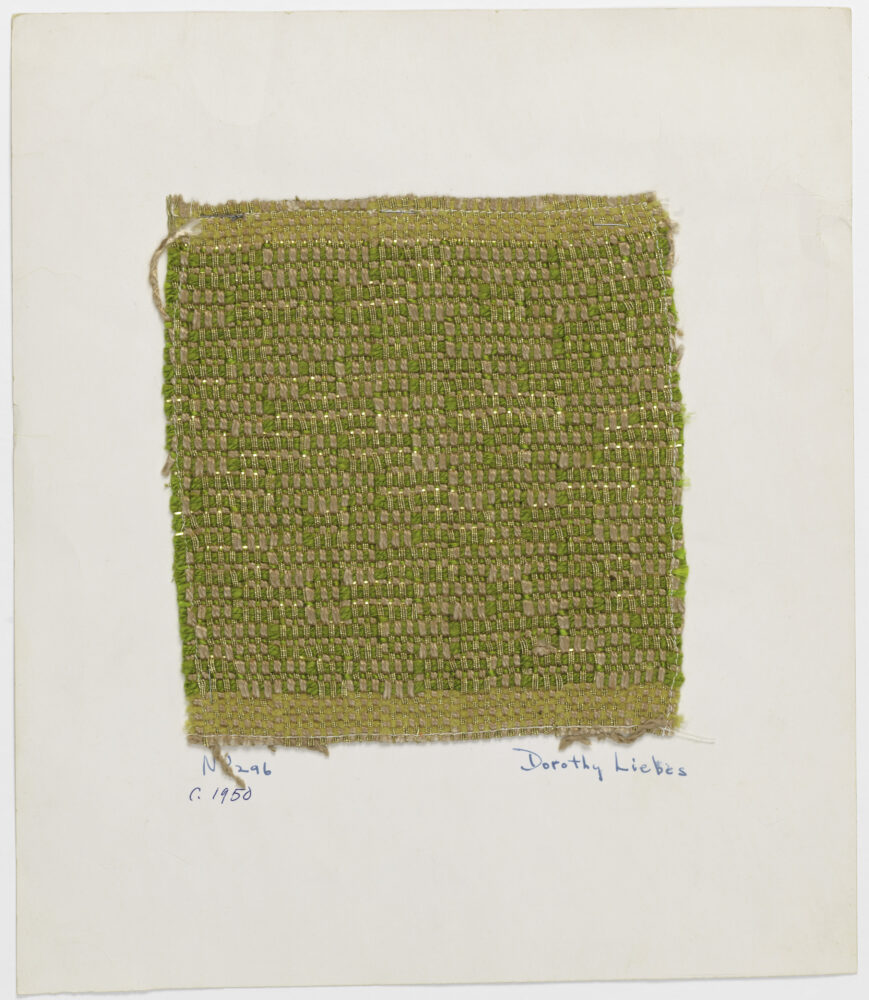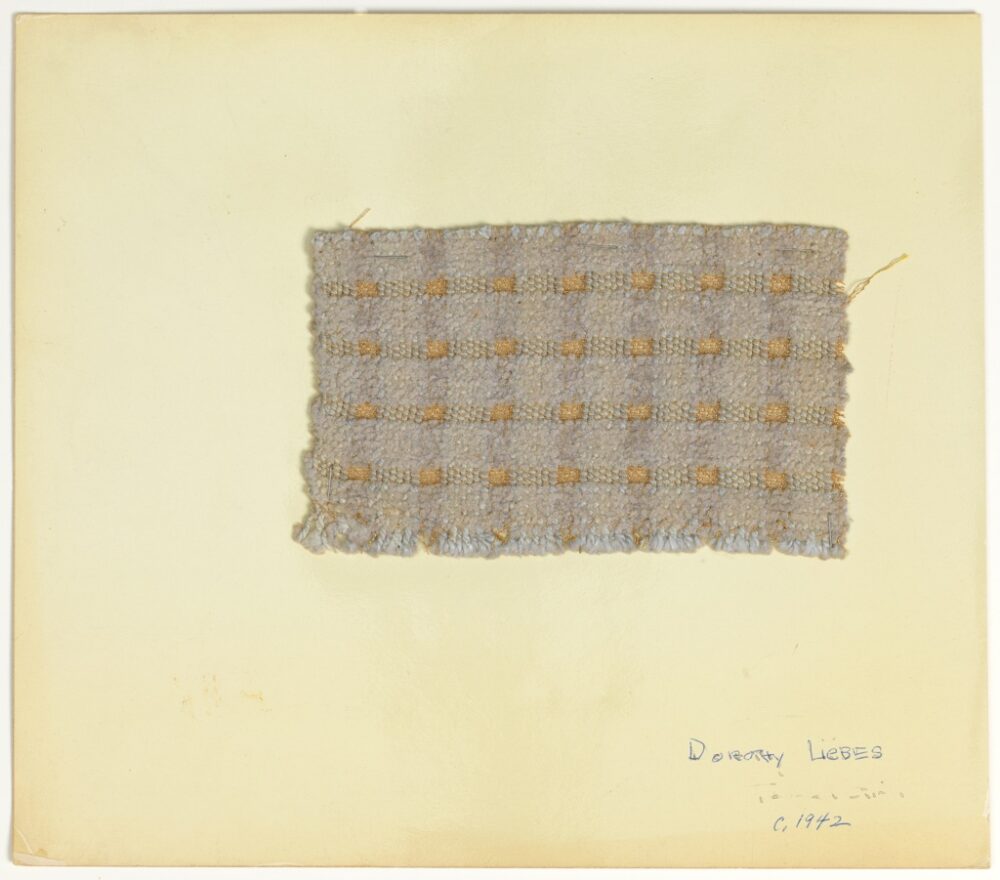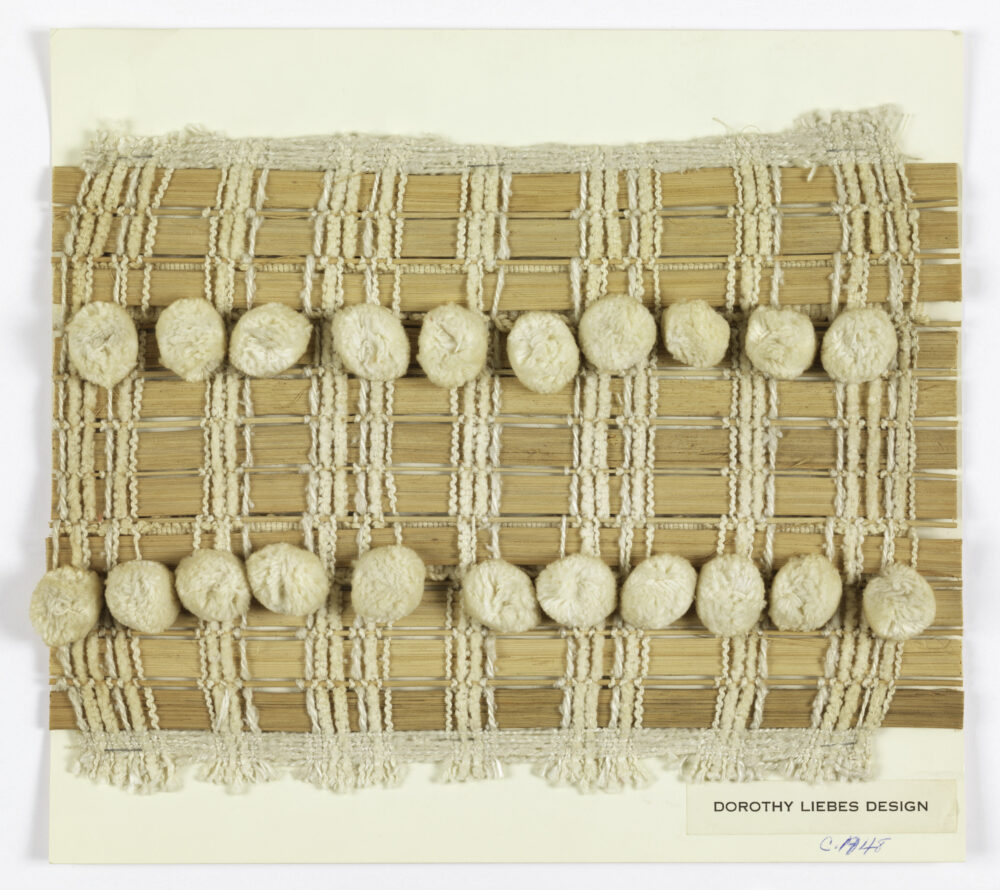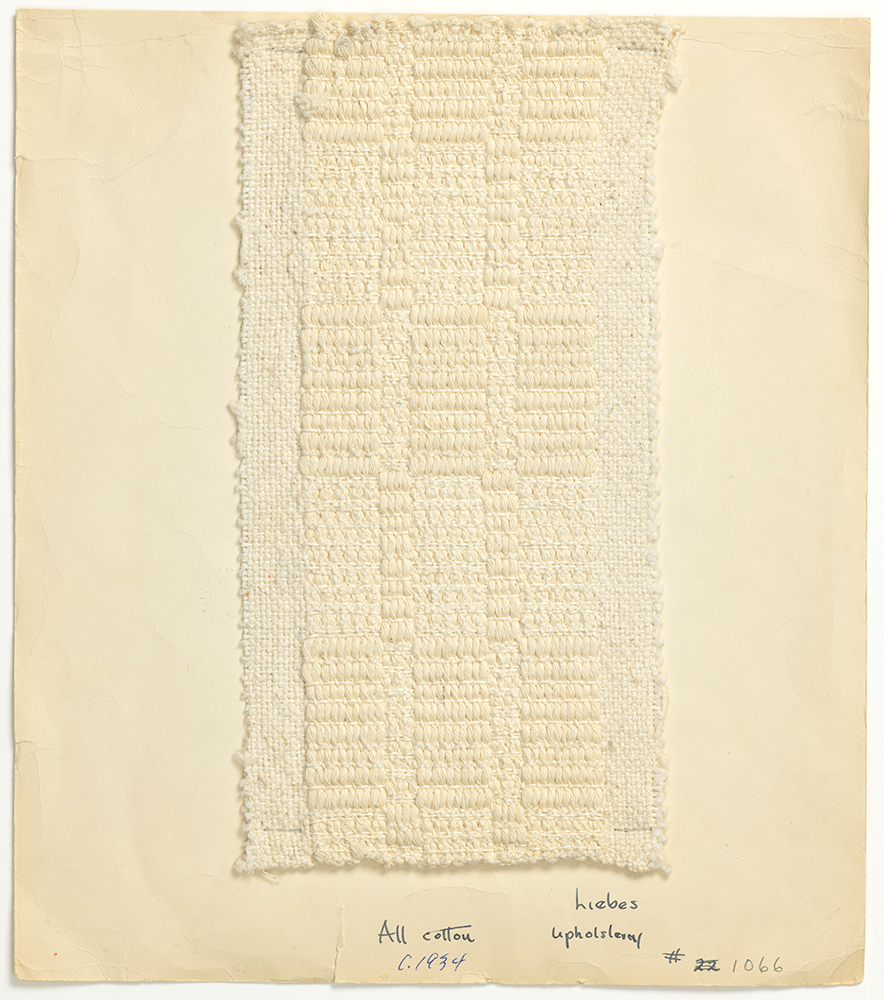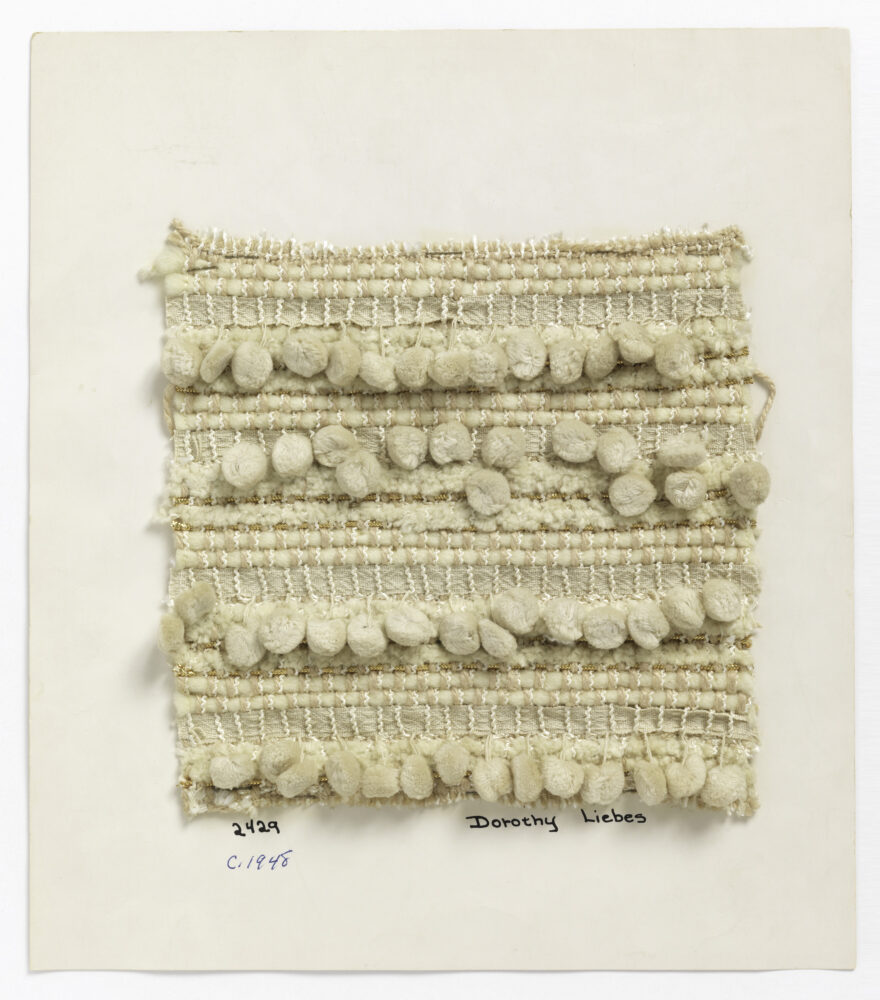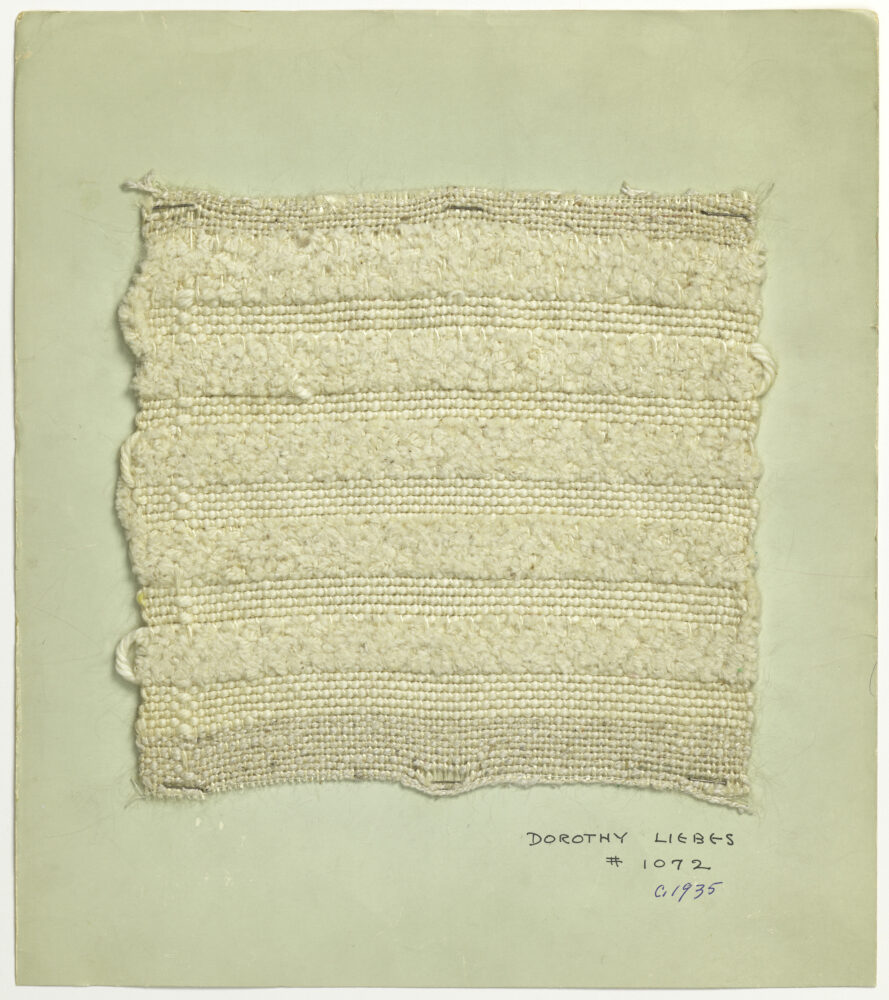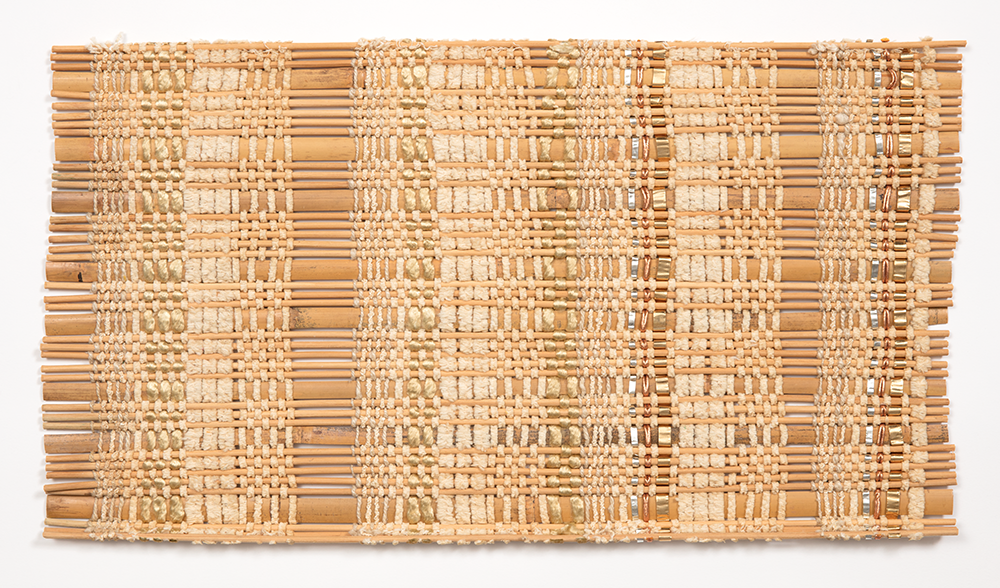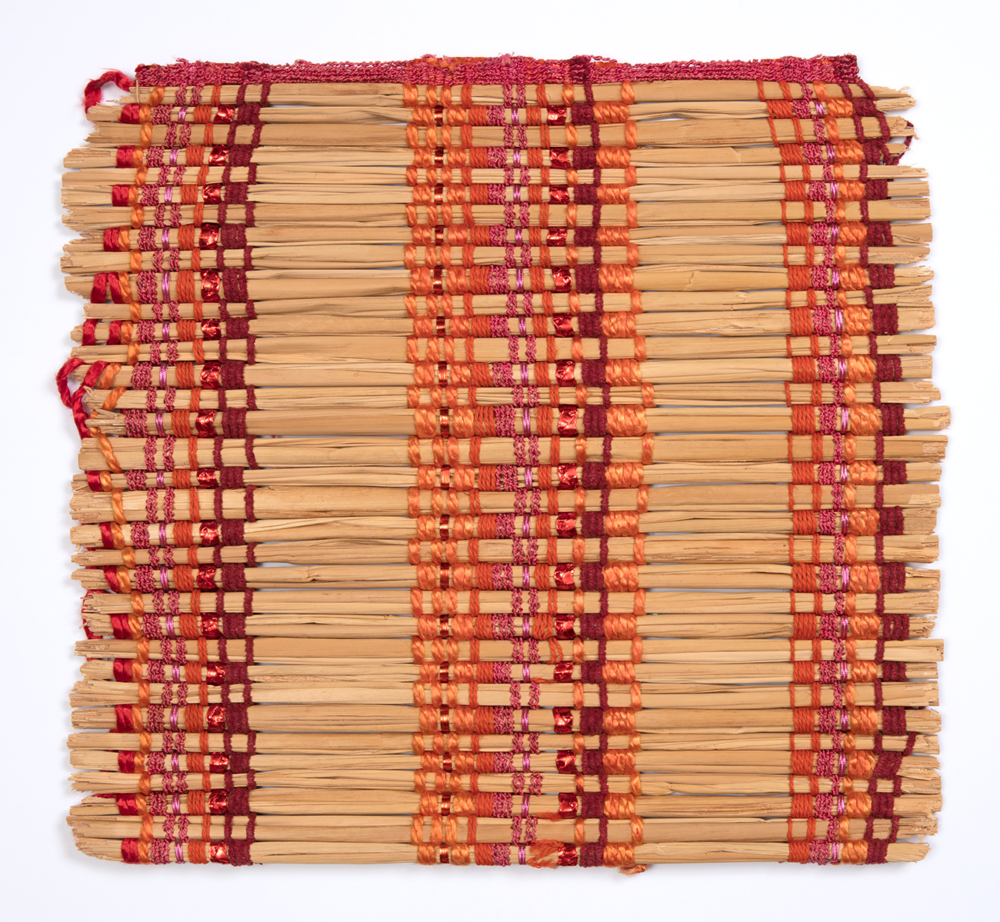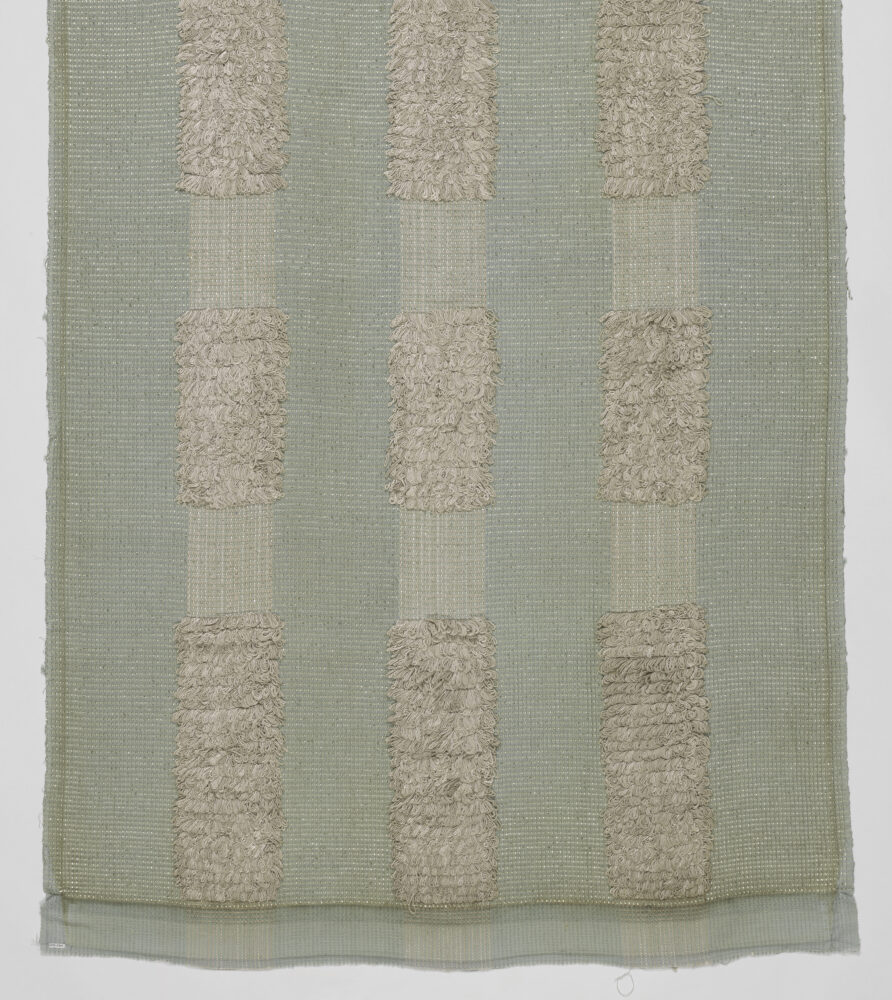“When people don’t feel my fabrics, I am hurt.”
—Dorothy Liebes, 1957 [1]
Architects often called on Dorothy Liebes to create an opulent atmosphere. Her luxurious fabrics enhanced the dining and dancing aboard luxury cruise liners, glimmered behind the fashion shows of Adrian and Clare Potter, and showcased art objects in the homes of collectors Samuel and Florene Marx and Doris Duke. For these clients, Liebes created luxury through texture, often contrasting the hard-edged glitter of metallics with velvety chenille and nubbly bouclé yarns, lustrous raw silk or mohair, and supple leather or suede strips. Liebes considered a tactile sensibility to be a critical element of textile design. “Next to color, I think an interesting tactile quality is most important in a textile,” she wrote. “When people don’t feel my fabrics, I am hurt.” [2]
In the 1930s, she developed techniques for creating extravagantly dimensional weaves, including long fringes that were knotted onto the warps in sinuous curves or chevron patterns and exaggerated looped pile—often with metallics glinting between rows—in checks or bands that resembled bas relief. These lush textures provided a perfect counterbalance to the polished surfaces of the period. “In the modern architecture of the ’30s, slick surfaces were everywhere—metal, waxed cork, glass brick—and the eye demanded relief.” [3] In fashion and film, the sensual tactility of Liebes’s fabric was used as a counterpoint to the cool, porcelain skin and glossy hair of the silver screen era, as seen in a 1938 Photoplay image featuring Dorothy Lamour (and in Liebes’s own portrait of the same period). [4] Liebes draperies and upholsteries were featured throughout the 1947 film East Side, West Side, but the most lusciously touchable fabrics were reserved for the apartment of the seductress, played by Ava Gardner.
The beauty of handwoven fabrics derives largely from the character and combination of yarns used. In her collaborations with textile mills, Liebes urged experimentation with heavier, slubbier yarns and mixtures of yarns: bulky and fine, woolly and slick, crisp and downy. She was also instrumental in the development of techniques like variable pick density (varying the number of wefts per inch across the surface) and hand-cut overshot (supplemental weft floats cut to create fringe-like effects) which replicated some of her handwoven effects at a price middle-class Americans could afford.
The handwoven quality popularized by Liebes influenced a generation of designers, including Jack Lenor Larsen and Florence Knoll, which Liebes acknowledged in a letter to DuPont about using their rug yarn for simple woven upholsteries. “I even like the rustic feel,” she wrote. “I think people are getting a little more sophisticated about recognizing the virtue of a certain amount of abrasive touch, rather than everything being silky smooth.” [5]
Notes
[1] D. Odenheimer, “Weaver Exhibits Fabrics in Pure Color,” Chicago Sun, January 17, 1943.
[2] Ibid.
[3] Ibid.
[4] Photoplay, March 1938; portrait of Dorothy Liebes, 1930s, Series 11, Box 40, Folder 2, Dorothy Liebes Papers Archives of American Art, Smithsonian Institution, Washington, DC. See Griffith Winton, Fig. 1, p. 61
[5] Dorothy Liebes, letter to A. J. Smith Jr. (DuPont), May 25, 1958, Series 5, Box 7, Folder 6, Dorothy Liebes Papers Archives of American Art, Smithsonian Institution, Washington, DC.
